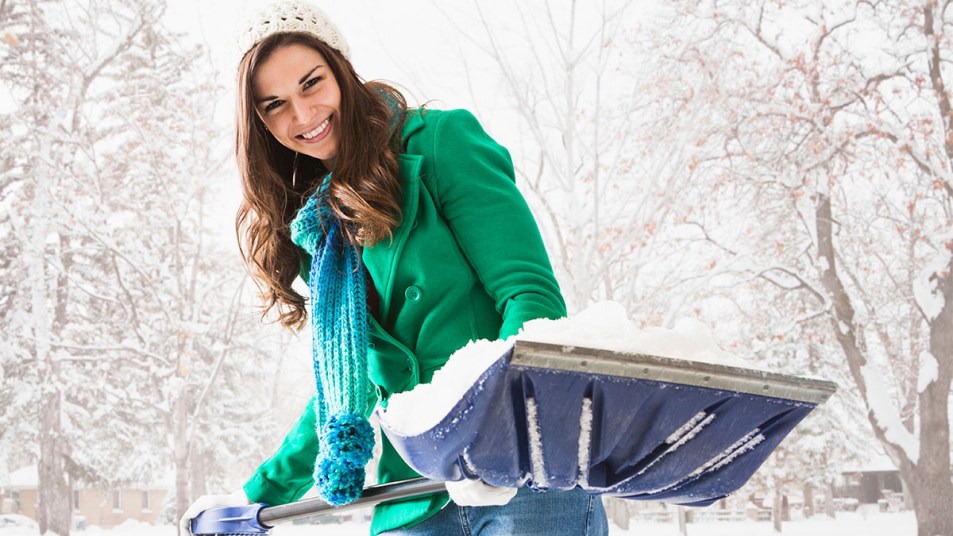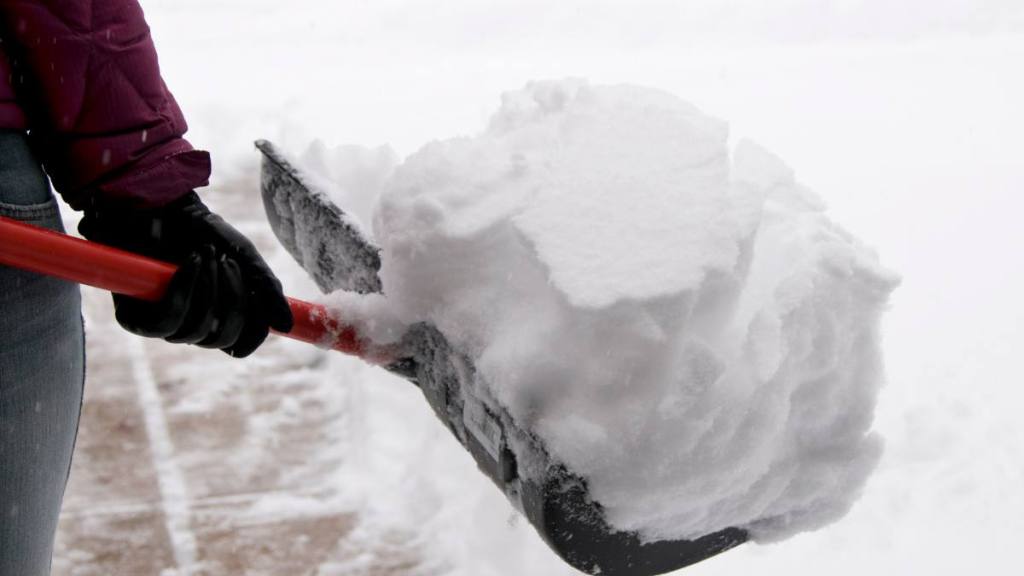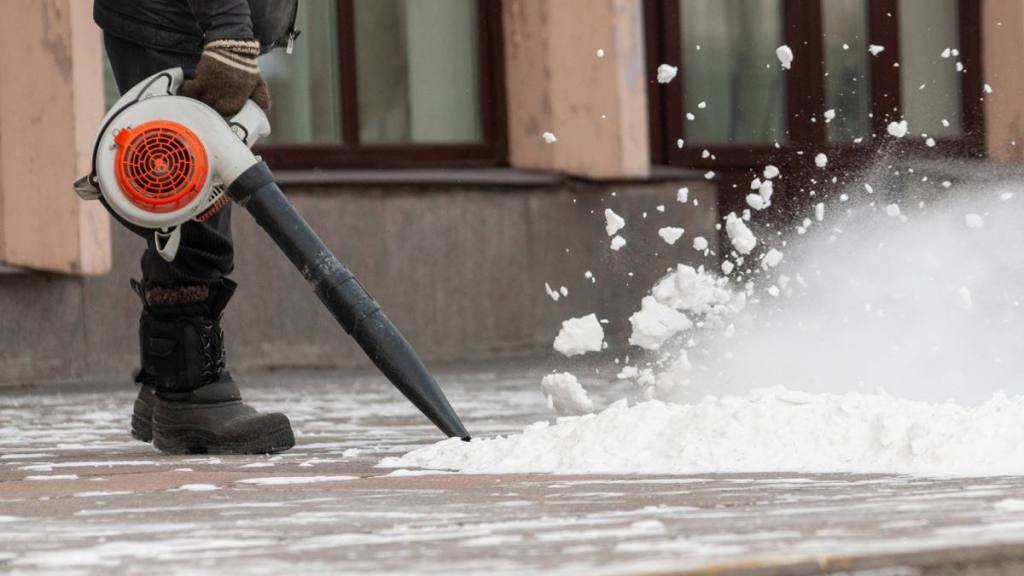This Genius Tarp Hack Clears the Snow for You — No Shoveling Needed
Plus 8 other genius way to make clearing snow safe and easy

Shoveling snow isn’t a task most people would list as enjoyable, but if you live in a region that gets yearly snow, it’s a necessary evil. While It’s tempting to want to sit inside and enjoy the snowfall from the comfort of your couch, your future self will thank you for getting the job done in increments. Because snow compacts and turns to sheets of ice as it falls, melts and refreezes, it’s not a job you’ll want to put off. Cumbersome as it may be, there are some tips and tricks to make shoveling snow less of a burden — both in getting the job done faster and ensuring you stay injury-free. Read on for expert tips on how to shovel snow with ease.
1. How to shovel snow: Stick to ergonomic shovels

According to Dr. Glenn Russo, a spine specialist at Connecticut Orthopedics, “the shovels with curved handles can be helpful in allowing you to keep your back as straight as possible while shoveling,” Plus, he recommends using a plastic shovel over a metal one since they’re generally lighter weight and easier on your back and arms.
2. Spray your shovel with *this*
Did you know that a quick coat of spray cooking oil, regular oil or a lubricant like WD-40 will make shoveling that much easier? According to WD-40, “To prevent snow and ice from adhering to your snow shovel, spray the blade of the tool beforehand with WD-40 (Buy at Walmart, $11.98) . The multi-use formula helps the snow slide easily off the surface of the blade and makes your task a bit less daunting.” While you’re at it, spray around your car doors to prevent them from getting frozen shut during a snowstorm or particularly frigid night.
Watch this YouTube video from HAPPY HOME and GARDEN with John and Dawne shows how well a lubricant works:
3. How to shovel snow: Lay out a tarp *before* it snows
This of course will require a bit of forethought on your end, but if you’re concerned about a particular area getting overloaded with snow, try laying a tarp or a large garbage bag out over the walkway, driveway, staircase or porch before it snows. That way, you can lift or drag the tarp out of the way once the snow is finished falling — just don’t wait long enough to let it ice over.
This instagram story on countryhomes.charm shows how well it works!
4. Pay attention to your hand placement

Making shoveling easier on your back can be as simple as where you place your hands on the handle. “When you grip the shovel,” Dr. Russo says, “make sure your hands are at least shoulder-width apart. The distance between your hands will increase your leverage and reduce the strain on your body.”
5. How to shovel snow: Add a handle to save your back
If you find that your hands are slipping too much to keep them at an even distance apart, you can try an ergonomic handle attachment like Back-Saving Tool Handle Labor-Saving Ergonomic Shovel or Rake Handle Attachment (Buy on Amazon, $9.94) that fits onto the shaft of the shovel, giving you more leverage and making it easier on your back. Alternatively, you can seek out a shovel that has two handles to begin with like Snow Joe SJ-SHLV20 Shovelution 20-Inch, Strain-Reducing Snow Shovel w/ Spring Assisted Handle + Impact-Resistant Blade (Buy on Amazon, $30.19) — this one is highly-rated and reviewers note significantly less strain on their backs.
6. Make a de-icing solution
Sometimes, even with the best-laid plans, ice can freeze over in inconvenient places. Rock salt is certainly an option for walkways, but for removing snow and ice from smaller spots like your car windshields, mirrors and handles, you can also mix up a batch of de-icing solution with ingredients you likely already have at home. Home and family blogger, Jessica Keilman, of Mom4real.com recommends mixing 1 cup of water, and 1 cup of isopropyl alcohol in a spray bottle as a simple de-icing solution. Plus, you can add a few drops of dish soap to make the solution spread and move across surfaces easier. The active ingredient here is the alcohol, which is what commercial de-icers use to quickly melt away ice.
7. How to shovel snow: Use a smaller shovel
This might sound counterintuitive, but it’s actually better for your back in the long run. Dr. Russo suggests “a shovel with a smaller blade as it limits the amount of snow you can lift which prevents you from lifting an excessively heavy load.”
8. Break out the leaf blower

Who says snow blowers are the only power towels to get snow cleared quickly and easily? Your leaf blower can do double duty by blowing freshly-fallen snow off of stairs and railings and can quickly clear a path before you sprinkle rock salt down to finish the job. This will only work with fresh snow, though, so you’ll want to be quick about it as the snow is falling.
9. How to shovel snow: Push it instead of lifting it
Depending on how much snow has fallen, Dr. Russo recommends pushing it out of the way as opposed to lifting and dumping it, which is easier on your body. “If you must lift,” he says, “be sure to do it properly. Squat with your legs shoulder-width apart, knees bent and back straight. Lift with your legs. Avoid bending at the waist. Scoop small amounts of snow and walk to where you want to drop it off. Do not throw the snow over your shoulder or to the side. This would require a twisting motion that stresses your back and could cause injury.”
For more outdoor tips, click through the links below!
The Simple Glue Trick That Adds Grip to Any Shoes to Help You Avoid Slips and Falls







